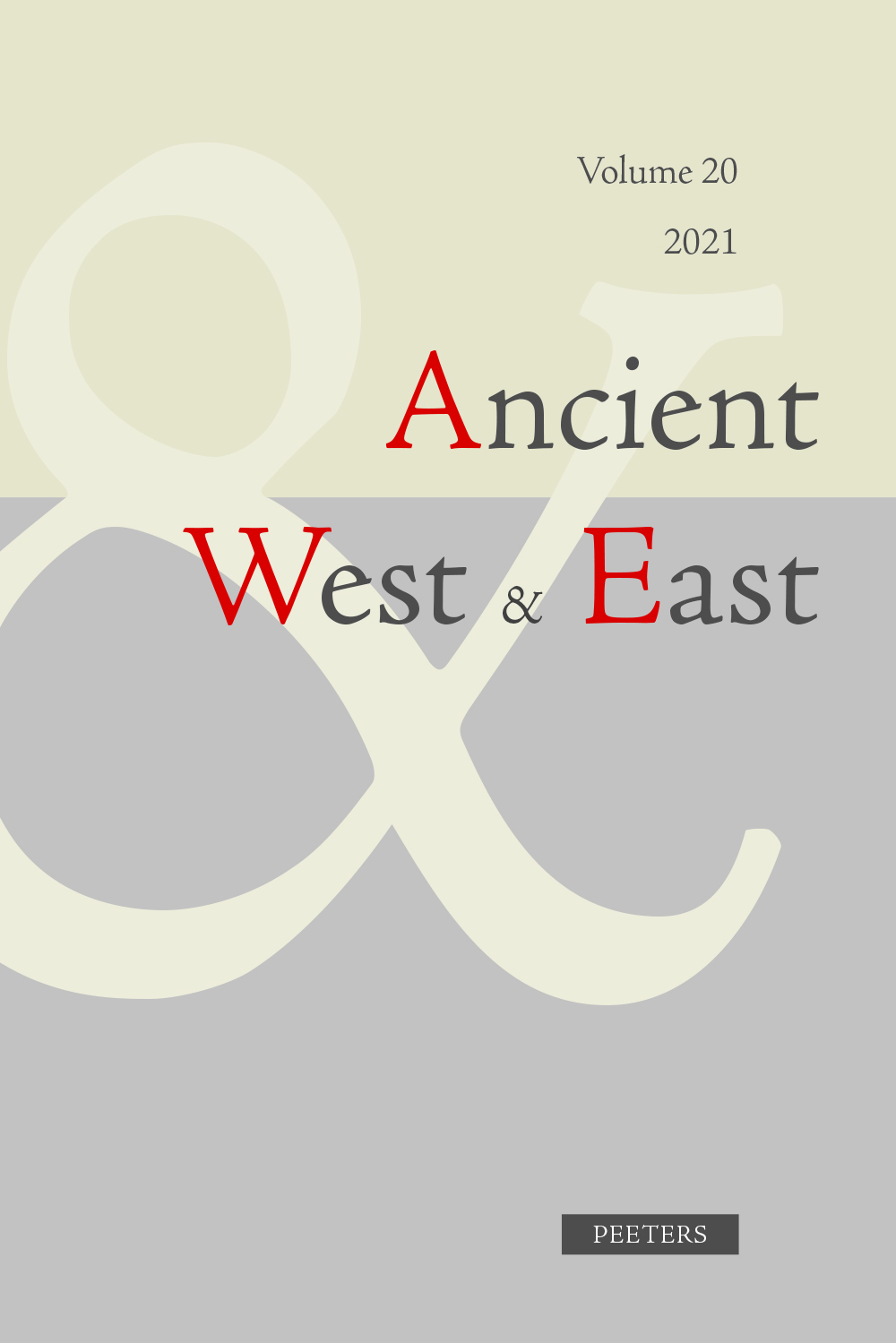 previous article in this issue previous article in this issue | next article in this issue  |

Preview first page |
Document Details : Title: Eastern and Western Motifs in the Composition with a Scene of Sacrifice from Noin Ula in Northern Mongolia Subtitle: The Embroidered Cloth from Mound 31 Author(s): ABDULLAEV, Kazim Journal: Ancient West & East Volume: 19 Date: 2020 Pages: 167-217 DOI: 10.2143/AWE.19.0.3288563 Abstract : The paper is devoted to iconographic analysis of the composition (a scene of sacrifice – burning incense on the altar) embroidered on the fabric from Mound 31 at Noin Ula in northern Mongolia. The priesthood itself is interpreted in a new way. The layouts of the composition as well as the decorative bands framing it show the influences of Hellenistic traditions. The characters with spears and swords in their belts represent the military nobility of Central Asia during the nomad migration. This is also indicated by the figure of a heavily armed warrior in lamellar armour. The participation of a saddled horse in the cult scene attaches special importance to the event. Many elements of the composition find their closest analogies in works of fine art of the first centuries AD. Despite the fact that the composition embroidered on fabric was used as a veil in the burial of a noble grandee (leader) of the Hsiung-nu/Xiongnu tribe, it was made in one of the centres of artistic creativity in Central Asia, possibly Bactria. |
|


